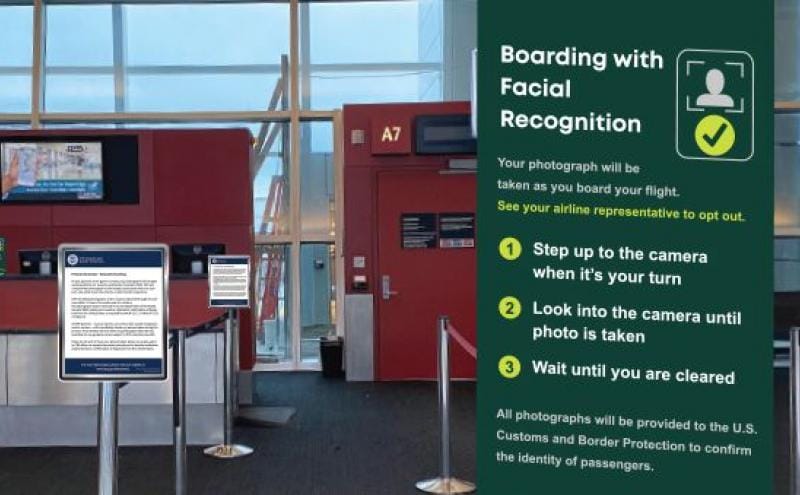Identity Rules: How COVID Is Affecting Biometrics in Aviation
Share

What will it take for biometrics technology to become commonplace and how is the pandemic affecting its adoption? Representatives from Delta Air Lines, Star Alliance, US Customs and Border Protection and more, share their thoughts during the two-part Biometrics Summit at Virtual Expo. This article originally appeared in Expo Daily Experience. Read the full issues and register for FTE APEX Virtual Expo — the platform will remain open as a resource until January 8.
The Masked Traveler
One of the major questions relating to biometrics during the pandemic is: Does facial recognition technology work when the traveler is wearing a face mask? “We successfully tested that,” says Raffie Beroukhim, senior vice-president and chief experience officer, NEC Corporation of America. The company has been working with Star Alliance on its biometric program, which recently went live at Munich and Frankfurt airports for select Lufthansa passengers. Enabling mask-wearing was an absolute must before the project could be rolled out. “The technology in [the Star Alliance biometrics service] is trained to overcome this mask issue [with] accuracies upward of 98%. We are, of course, continuously monitoring and improving this technology,” adds Kris Ranganath, chief technology officer, Advanced Recognition Systems and Digital Platform at NEC.
Another question is whether health passports can be integrated into biometrics services. “We need to assure the receiving countries that the passenger is someone they are willing to accept,” says Isabelle Moeller, chief executive, Biometrics Institute. “We need to find solutions that allow the sharing of data but in a responsible way; health data is another layer of sensitive information … so it’s a massive challenge, but also an opportunity.”

Privacy Please
Data protection and privacy are ever-present themes in discussions around biometrics. “The privacy by design [approach] that has gone into the programs that the CBP and TSA have created, and that we’ve contributed to, hits the mark striking a balance between ease of use and … doing it in a way that respects privacy and keeps customer choice as part of the equation,” says Greg Forbes, managing director, Airport Experience, Delta Air Lines.
Forbes also highlighted that it’s important biometric screening solutions be consistent everywhere the airline flies. “A lot of the hardware that we’re looking at is with
full-scale in mind.”
Obstacles, of Course
While biometric technology is gradually being implemented at airports across the world, Ranganath sees the pandemic as both a hhindrance to, and proponent of, its spread in air travel. “COVID has put [economic] stress on airports and airlines. The adoption rate [of biometrics] will be driven by return on investment. So [we are trying] to make it very affordable,” he explains. “[But] COVID has also reinforced the idea of frictionless travel. It has put emphasis on [biometrics] as an essential technology.”
Christian Draeger, vice-president Customer Experience, Star Alliance, is optimistic however that biometric technology will be a priority for airlines and airports as the industry recovers: “I think we need to come back to a certain level of recovery that allows all of the stakeholders to unleash their investment agendas. We do have indications that once this happens, [biometrics will] be very high on the list of topics that they are ready to invest in.”
Case Studies
I Saw the Sign
The Port of Seattle, which operates Seattle-Tacoma International Airport, established a set of guiding principles for public-facing biometrics in December 2019, with the goal of prioritizing transparency and the protection of travelers’ privacy. One of the results of this process was a communications plan, including clear signage indicating where and how biometrics are being used at the airport. “We start off with information provided on our website,” explains Dave Wilson, director, Airport Innovation, Port of Seattle. “There’s signage at ticket counters … showing what the process is and the fact that it will be used [and] we’re using terminal paging in seven different languages. If [travelers] want to opt out, they can go to the customer service agent to find out how to do so.”
Joint Effort
The TSA and CBP partnered on a series of pilots at JFK, LAX and ATL in 2017 and 2018 to demonstrate the feasibility of using biometric solutions to automate the travel document checker (TDC) system. The next pilot will take place in 2021 at DTW and will be open to PreCheck and Global Entry members traveling both internationally and domestically. “We have developed a joint data architecture between TSA and CBP … that takes the travelers’ consent [provided when checking in via the airline’s app], PreCheck status and biographic information, and sends it to CBP to pull the photo from the passport and save it for that passenger, for that day, for that location,” explains Jason Lim, manager, Identity Management Capability Manager, TSA.
Virtual Expo Connection
Parts 1 and 2 of the Biometrics Summit will be available in the event environment until January 8, 2021.


